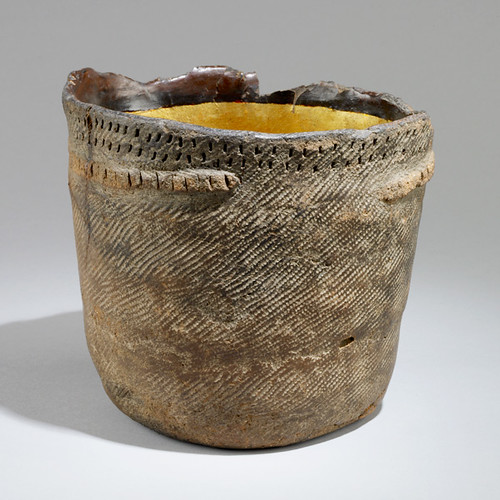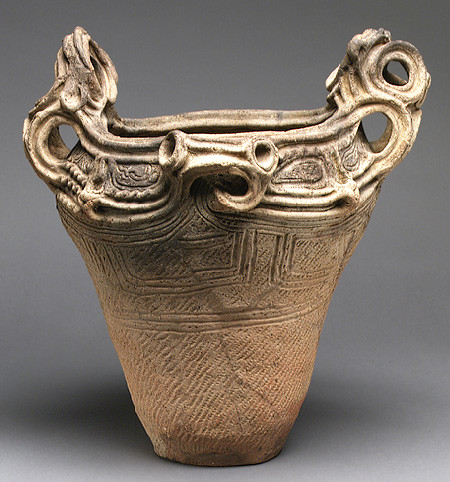|
Last week, I introduced the blue bean studio Rope Series. So what better time than now to talk about the *original* Rope pottery?
Before the blue bean studio Rope Series, there was Jōmon pottery.
When I first started focusing on using rope to texture and decorate my pieces, I was told that it had been done before. Of course, I wasn’t surprised to hear that; after all, most ideas are not entirely new and are birthed out of other existing ideas.
But then I looked deeper into the matter and discovered that not only had it been done before, it had been done on some of the oldest pots ever discovered anywhere in the world.
The pottery I am referring to date as far back as 14,000 BC (that’s OLD!) and come from Aomori in northern Japan. These ancient pottery fragments, called “Jōmon” ware, were first discovered near Tokyo in 1877.

The term “Jōmon” (縄文) means “rope-patterned” in Japanese, and describes the characteristic twisted cord patterns impressed on to the surface of the clay. An entire period in the prehistory of Japan, the Jōmon Period, lasting from around 14,000 to 300 BC, is named after this style of pottery, which was produced throughout that time. The very long Jōmon Period is further divided into six phases.
The Jōmon peoples have been described as hunter-gatherers who later became semi-sedentary. The typically small vessels associated with them were probably used to boil and eat food. As the people settled into more sedentary lifestyles, their vessels increased in size. The pottery produced during the Jōmon period has been classified into about seventy different styles, with additional regional variations.

While I did not draw inspiration directly from the ancient Jōmon pottery, I find it intriguing that, when given the opportunity, I had the same desire to impress rope patterns into wet clay as did humans who lived over 15,000 years ago. In a very similar (if not identical) manner, we chose to use a “regular” object to create texture and decoration on our pottery, to make more beautiful a functional object. What does that say about me? What does that say about the Jōmon people?
Perhaps we have not changed so much…
|

